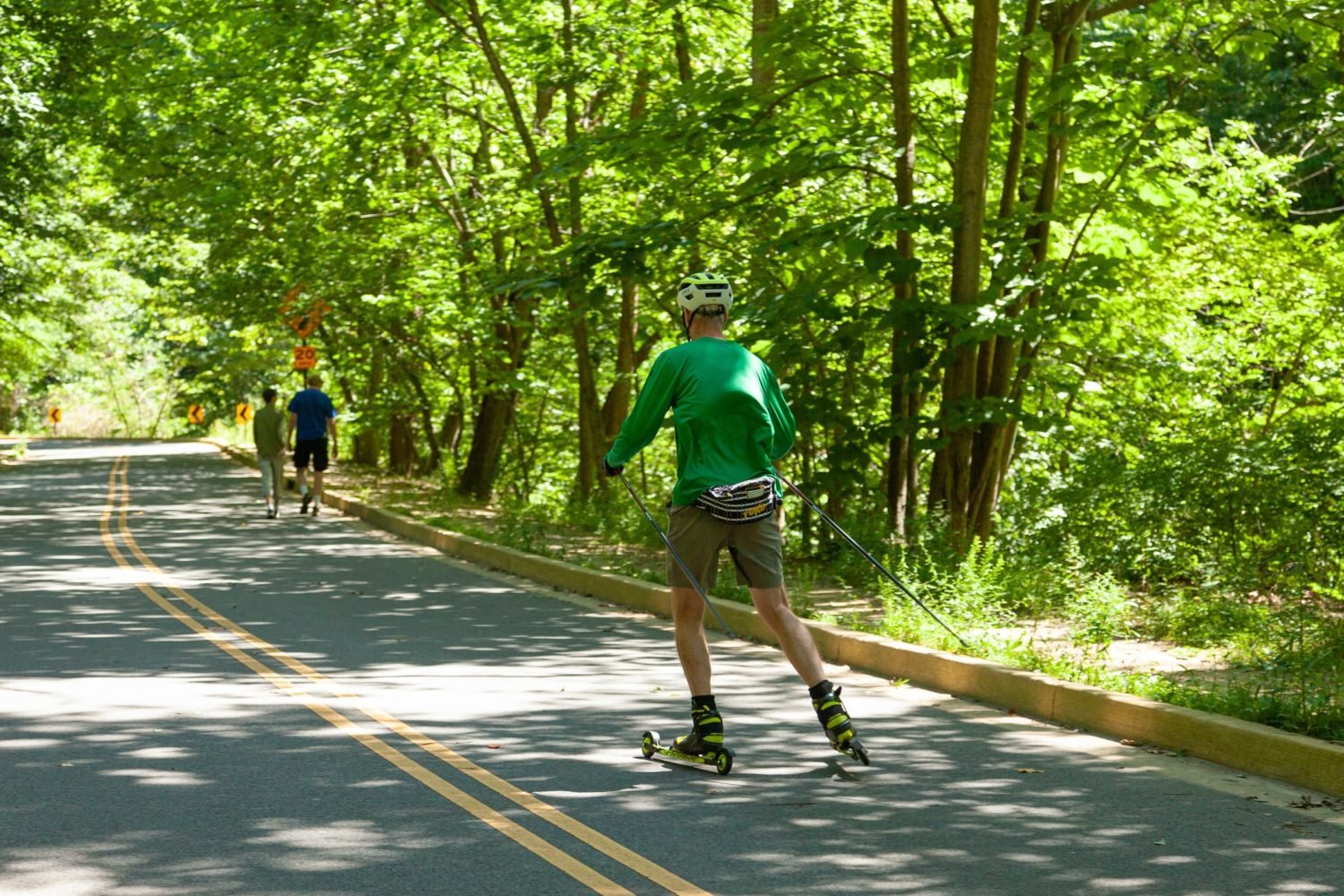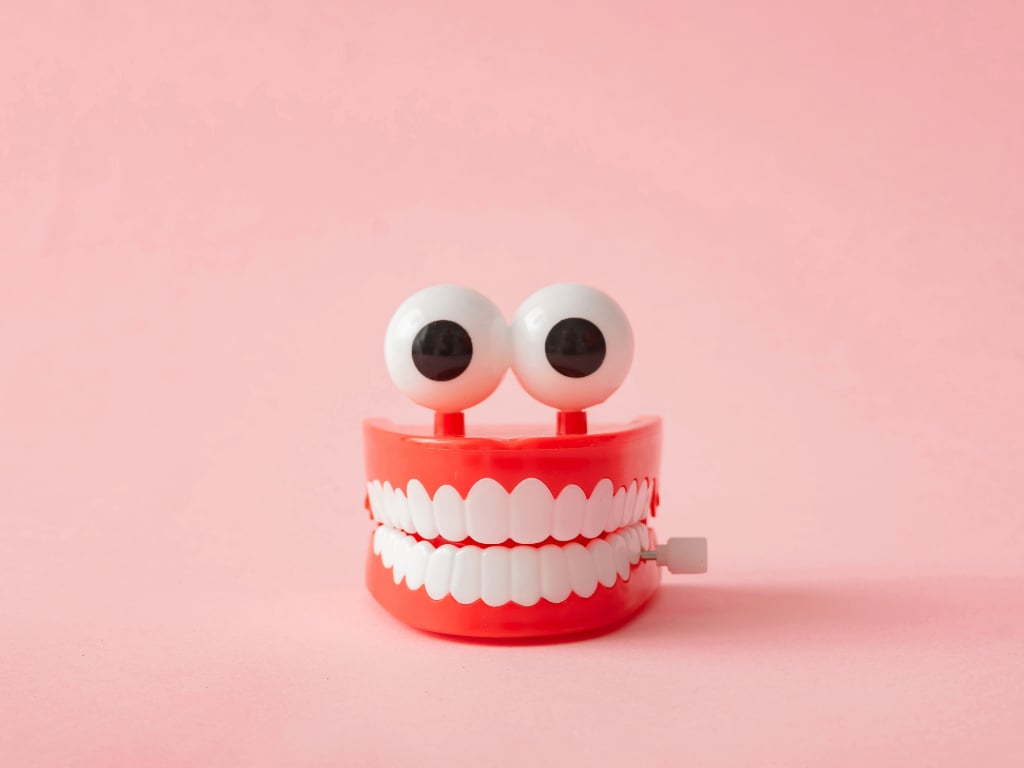
While we may earn a commission if you buy something through these links, we make unbiased, independent decisions about what to recommend.
More than bat wings or jowls, my mother’s greatest fear in old age was developing a dowager’s hump, a curvature of the spine that can result in an upper back appearing rounded or hunched. “Don’t slouch,” she’d warn my father, smacking him between the shoulder blades. Before arranging my brother and me for a family photo, she’d bark, “Stand up straight!”
Now that I’m comfortably in my fifties, I’ve noticed that in some of my photos—candid and taken from the side—a slight curve is starting to form. Where my neck should be tall and regal, it’s truncated and rounded. My shoulders, too, practically meet at my ears, giving me the appearance of a cartoon vulture.
And it’s not just me. The other day while waiting for the Metro, I noticed my fellow straphangers walking down the platform, eyes down and focused on phones and tablets. Of the 29 people I counted, 25 clutched some sort of handheld device. What I was seeing was “text neck,” according to a 2020 paper published in IOS Press that examined the “anatomical, biomechanical, and muscle activation changes within the cervical and thoracic regions associated with the sustained, forward, flexed neck posture, observed with excessive usage of hand-held mobile devices.” With the average person using a smartphone 5.1 hours a day, according to the paper, that’s a whole lot of text necks crying out in pain.
What’s more, surmises Clark Spencer Larsen, a biological anthropologist and distinguished professor at Ohio State University, “watching people hunched over on their mobiles on a daily basis could set the stage for osteoarthritis of the neck vertebrae.” In the future, Larsen thinks, “archaeologists might dig up skeletons dating to the 21st century and see skeletal changes associated with the excessive use of mobile phones.”
In the shorter term, poor posture literally influences how we move through the world. “Posture is an integral part of our presentation,” says Crystal L. Bailey, director of the Etiquette Institute of Washington. “Slumping tells the world, ‘I’m not comfortable or confident in my own skin.’ ”
Other than walking the streets of DC with a stack of books on my head (as Bailey has her students do while going up and down stairs), what’s a text-necking, shoulder-rolling desk sitter to do? I reached out to posture pros for tips and home exercises. Along the way, I also tried a few products—or gimmicks, depending on your level of cynicism—and will share my findings here.
If you’re reading this on your handheld, try not to hunch.
What’s the Buzz About?
For about $63 (at Amazon) and the willingness to stick a gadget the size of a dental-floss container to your upper back, the Bestand Pro Intelligent Posture Corrector and Trainer promises to deliver a gentle vibration every time you slouch. In other words, stand up straight or be treated like one of Skinner’s lab rats. My husband, Karl, adheres the device a few inches below the base of my neck. I slump and slouch and hunch and huddle without incident. It’s only when I contort myself like Gollum that I finally feel a slight zap. I try it a few more times, hoping for a buzz before I reach Middle Earth. “Give me my precious,” says my husband, who has finally had enough. I return the Bestand (“Best and what?” snipes Karl) the next day.
A Miracle Bra
Who needs technology anyway? Next, I try something as low-tech as they come: a bra. Specifically, the Playtex 18 Hour Back Support Posture Bra (less than $20 at Amazon), a front-closing contraption with something resembling a truss between the shoulder blades. The package calls it a Power SupportX and credits the binding for providing better back support, but man, if this bra doesn’t do wonders for my front. Thanks to a pair of “magic rings,” I now have cleavage up to my neck. I’m reminded of that line from The First Wives Club that Dr. Morris Packman, played by Rob Reiner, says to his patient: “If I give you one more facelift, you’re going to be able to blink your lips!”
I’m not sure if it’s helping my posture, but the crisscross support reminds me of my grandfather’s gentle hand on my back when I was a child, guiding me through a restaurant or across the street to look at squirrels. If I slouch, I don’t feel his hand, so I’m inclined to stand straighter. I miss my grandfather.
How to Sit
The key to good posture is the position of the spine, which has three natural curves—at your neck, mid/upper back, and lower back. Correct posture helps maintain these curves. Your head should be above your shoulders, and the top of your shoulders should be over the hips.
“It’s established habits that cause poor posture,” says Marian Goldberg, who runs the Alexander Technique Center of Washington. “The more you do it [slouch, hunch, crouch], the more your system experiences it and gets used to it.” In essence, our not-so-stellar behaviors get imprinted on our neuromuscular system. How we use our bodies today is the result of the bad habits learned since childhood. The best way to rid ourselves of those habits, say Alexander Technique teachers such as Goldberg, is to unlearn them.

Goldberg has been unlearning her habits since the late ’70s, when she discovered the Alexander Technique after suffering a back injury. The method has been around since the 19th century, when its founder, actor and elocutionist Frederick Matthias Alexander, began to lose his voice during performances. Using a mirror to observe himself delivering his lines, he noticed that the way he held his head and neck impeded his delivery. It’s what ultimately led him to his prescribed theories about proper body alignment.
Back then, Alexander suggested students take 30 lessons, but, says Goldberg, “95 percent of students feel a change with one.” For most, undoing a habit involves chair work during their first lesson. “When our neuromuscular system is ‘better tuned,’ we do everything better,” Goldberg explains. “So in learning to sit and stand more naturally, we are tuning our systems so that whatever we do becomes easier and more efficient.” A 30-minute session with Goldberg is $87.
The natural coordination we had when we were young is still there, Goldberg says. “It’s just been underneath all the habits we’ve formed since.” As she tells me this, I notice that the whole time I’ve been on the phone with her, my left leg has been crossed over my right as tightly as a Twizzler. Which might explain why, in favoring my left hip, I’ve been putting undue stress and pain on my right.
“Are you sitting with knees and feet hip-width apart? With both feet on the ground? Are you on your sit bones?” asks Goldberg, essentially giving me my first lesson. “Sitting upright should be easier than slouching. It takes more effort to slouch.”
After spending decades on one hip, I vow to uncross my legs when I’m sitting at my desk. I also practice sitting this way while on the Metro. I notice that as soon as I put both feet solidly on the ground and shift ever so slightly onto my sit bones, the tension that usually lives in my lower back releases, as if I’ve done a line of muscle relaxants. I feel like yelling at the manspreader next to me, “Knees should be hip-length apart!” After a few days, I’m amazed that the soreness in my lower back is gone. It’s hard not to stand up and take notice.
Front to Back
Along with the engineering marvels of a bra and the simple act of sitting correctly, I found the advice from Alicia Moyer, a massage therapist and yoga instructor at Past Tense, in Mount Pleasant, to be most useful—and surprising.
“Yoga says we live in a place of forward movement,” Moyer tells me when I phone her. “Yoga also says we need to move backwards and to the side.”
It’s all about balance. To help with good back posture, she has me do work on the opposite: my front. Moyer asks me to sit in my chair with my arms alongside me. “Now turn your palms up, which will also encourage your forearms to point up,” she instructs. “This pose moves your arm bone back, which will open up your chest.” If I’m feeling ambitious, she adds, I can tuck my chin into my chest to give my neck more length. “Hold for 30 seconds and work up to a minute, three times a day.”
Next, Moyer has me walk through a door as I press my palms, forearms, and elbows to the doorjambs. The trick is to keep walking, leaving my arms behind. For those who tend to round their shoulders, this pose is manna for tight pectoral muscles. And it’s easy to incorporate into my day, especially when I’m working from home. Every time I walk from room to room, I strike a pose in the doorway. After a few days, I feel my chest open, exactly as Moyer promised it would. “If your posture is slouched and hunched over,” she tells me, “your chest and rib cage will be in a position that makes it harder for your lungs to fill with air.”
Finally, Moyer recommends taking a small ball—a Tune Up Therapy Ball (around $20 or less at Amazon) works well—and rolling it under each foot. “This will help you stand better, because the act of rolling will wake up all the receptors in your feet,” she says. “Your brain, which is so far away, now knows you have a foot.”
After introducing your brain to your feet, she suggests trying a Mountain Pose: “Stand upright with your feet facing forward, parallel to each other, and feel your legs press down into the earth. As you press down with your lower body, keep the shoulders open and away from the ears.”
When I do this, I imagine my body is a piece of taffy being pulled down and up at the same time. Because the pose helps maintain the spine’s natural position, it also helps improve posture.
Tissue, Please
After all that good posturing, bodywork does wonders for further releasing tension. “Massage breaks up muscles sticking to themselves and other muscles,” Moyer tells me, explaining that my tissues change when I slump. “With massage, your tissues have time to open up.” For a similar effect, lie down with a rolled towel or blanket placed vertically against your spine. Then just breathe. Spoken like a true yogi.
Practice Makes Posture
The search for better posture is never-ending. There were tai chi classes that I wanted to take and chiropractors I wanted to visit. But whenever I read about posture, yoga and stretching were common prescriptions. I also really liked the literature behind the Alexander Technique—in fact, I had taken a few lessons before my wedding 16 years ago so that I wouldn’t have an album filled with slumpy bride photos.
I also remembered the advice that Paul Medina, the founder of Capital Energy Training, gave me years ago when I was working with him and a team of other fitness trainers for an article I was writing for this magazine: “Pretend you’re squeezing a nickel between your shoulder blades.” Medina was trying to get me to keep my shoulders from rolling forward. Turns out metaphorically squeezing spare change works. It also turns out, as evidenced by those recent photos, I really should have kept at it.
But perhaps what truly worked best for me is no longer an option. My mother died eight years ago. How I long to hear just one more “Straighten up!” and feel the staccato prod of her index finger as it lands squarely on its sweet spot.
This article appears in the January 2023 issue of Washingtonian.
Illustrations by Connie Zheng.











